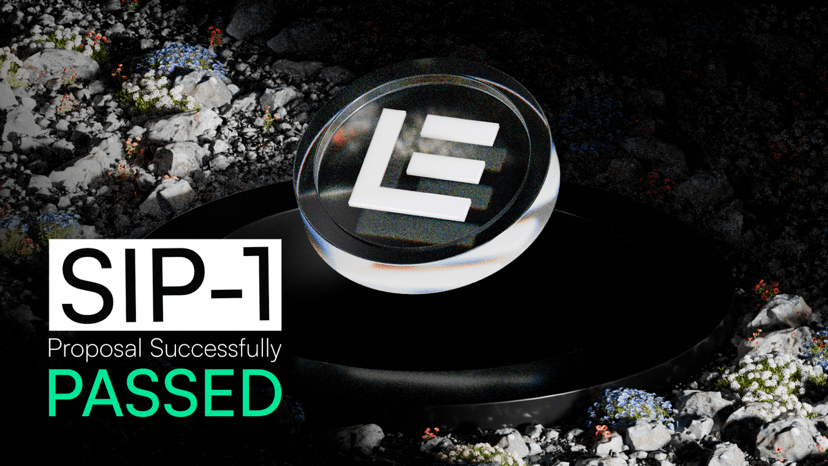In my opinion, this coin is still quite valuable.
Imagine that old computer in your kitchen, struggling to play videos, with a keyboard that lags and takes two presses to respond; you’re so frustrated thinking, 'Hurry up, let’s replace it with a smooth computer that can dance.' The Solana blockchain is similar: it's fast, but when it comes to accommodating more complex applications and scaling, it lags like an old machine. Solayer acts like a 'super add-on' for Solana—making it run as fast and stable as a new machine out of the box.
What is Solayer researching?
In simple terms, Solayer is the first restaking protocol + hardware accelerated L2 in the Solana ecosystem, equipped with InfiniSVM architecture, allowing on-chain processing capacity to achieve the possibility of '1m+ TPS'. How is this achieved? By targeting hardware acceleration + integration of software and hardware, using InfiniBand, SDN, and RDMA to boost on-chain processing speed, reducing latency to almost imperceptible levels. It’s like giving Solana a Turbo, solving computing power bottlenecks without sacrificing security and decentralization.
2. Restaking means your SOL works two jobs
Keep pushing forward, Solayer uses restaking in a new way: you stake SOL or LST (like mSOL) to Solayer and get back sSOL—just like you entrust your house to a financial company and receive a 'ticket' that you can continue to use to rent out and earn.
These assets 'restaked' not only help you earn interest but also safely support dApps or AVS (Actively Validated Services), such as bridges, oracles, etc., acting as Solana's support team, making the entire ecosystem run more steadily and quickly.
lnfiniSVM: Hardware running cars on-chain
Solayer relies not only on software but also on hardware strength: its InfiniSVM architecture uses hardware for scaling—such as SmartNICs and FPGA accelerators, forming execution clusters interconnected by high-speed InfiniBand. This way, the entire process of 'scheduling, signing, and deduplication' is offloaded onto the hardware, directly releasing CPU computing power, trading speed for experience. What’s the goal? Let’s mention a number: 1 million TPS and 100 Gbps bandwidth is not a dream.
Solayer's 'three treasures' product line
1. sSOL
Users receive a 'usable pass' after restaking SOL, still earning rewards, and can continue to use it in DeFi, truly stable and flexible.
2. sUSD stablecoin
Solayer's unique product: directly earning interest from US Treasury bonds (T-Bill) while also earning from restaking, users enjoy 4-5% APY. Clearly, there’s a 'bank account' with interest on Solana.
3. Full-chain vertical financial stack
Not only restaking, Solayer has also developed a one-stop service for 'saving, earning, and spending': sSOL, sUSD, and even issued a physical Debit Card that allows you to use on-chain assets directly for daily consumption.
Behind the scenes: TVL, financing, user confidence
Solayer is not a 'small project', it has many highlights:
TVL has exceeded hundreds of millions of dollars, with high restaking activity and over 300,000 users.
Strong financing backing, with institutions like Polychain, Binance Labs, Finality Capital entering the scene, accumulating over tens of millions of dollars in financing since 2024.
Supports multiple wallet access (Phantom, Solflare, Backpack), no need for new chain ID or extra wallet switching, resulting in a very smooth user experience.
How attractive is Solayer?
It’s like installing a nuclear-level fan on your computer: the stuttering that used to burn your hands is now responding in a second, cooling steadily.
Restaking adds secondary income to SOL: it’s like your salary comes in, and you can also run an AirBnB, keeping your money and earning more.
sUSD is essentially a high-yield fixed deposit account on-chain: the interest rate is higher than banks, benefiting from inflation and dividends while relying on T-Bills, so you can rest assured to keep it there.
Hardware acceleration is like having a high-speed train behind you: software slowly starting? Not a chance; the speed takes off from the hardware.
Advantages + minor flaws, I’m being honest.
Advantages: Truly enhances Solana's chain speed and throughput, both hardware and software.
Restaking makes asset efficiency soar;
sUSD offers low-risk, high-return products;
User experience is smooth, and it can be directly consumed in DeFi;
Investors have a reliable background, with strong TVL.
Risk warning:
The restaking model is innovative, but regulatory policies and market trends are unclear;
High hardware deployment costs and frequent update risks need to be managed;
TVL and user retention must continue to grow to support the subsequent ecosystem;
Attention should be paid to the inflation of the LAYER token and market fluctuations.
Grounded conclusion: installing add-ons for Solana
If you still think Solana's speed can't meet demand or that SOL can only be used for staking, then let Solayer help you 'transform'—restake, accelerate, secure, low fees, and still earn interest. Solayer is like installing an 'add-on' for Solana—making the experience better and assets move!
@Solayer #BuiltonSolayer $LAYER